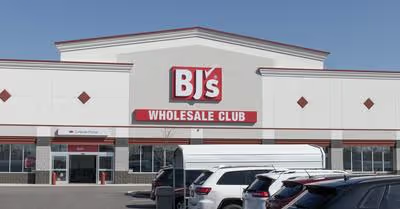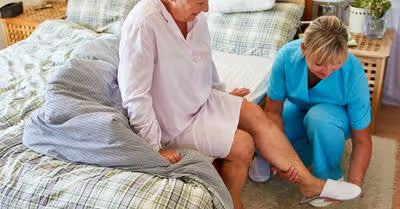Table of Contents
Healthcare at Home
Home care resources are a vital component when considering aging in place. As age advances, coordination of care for complex health conditions is vital to the ability to stay in your home. Medicare has benefits that are aimed at providing proper health care oversight that has some availability for in-home services.
Your physician must certify that you require in-home healthcare services. These services can only be on an intermittent basis- that is, that you don’t require around the clock care in order to remain safely in your home. Intermittent home care services will often provide basic light housekeeping assistance, assistance with bathing, dressing or grooming needs, and medication oversight, if needed.
Your doctor must also certify that you are considered “home-bound”. This means that you are not independently able to make it out of the home for common tasks- grocery shopping, independently attending healthcare appointments, etc. If certified for home-bound status, other services can be provided in your home that you would otherwise have to go into the community to ascertain- physical therapy, occupational therapy and skilled nursing services are all examples of appointments that could transition to in-home care if you become home-bound.
Meal Services
One aspect of aging in place that is of immense importance is knowing where your next meal is coming from. Meal preparation can be a part of medical in-home services provided, but often grocery shopping and meal delivery are not covered items in these programs. If you’ve qualified as home-bound, getting out to get groceries is considered something you’re unable to manage. Ensuring your food security is a paramount consideration when looking at aging in place.
Meal preparation and delivery services are often available through senior programs in local communities. One of the most well-known services is Meals on Wheels, typically operated through a commission on aging within your community. This service is frequently a volunteer-dependent program that has volunteer staffing deliver prepared meals, often hot and ready to consume, on a regular basis. Additional services that are similar to Meals on Wheels are also available, depending on your location.
Another resource for getting meals or groceries available these days is grocery delivery services. The increase in popularity in these programs can be attributed to the pandemic, but these services are vital to seniors choosing to age in place at home. For a small fee and a technologically savvy senior, groceries are a few clicks away. You can utilize a grocery delivery service for your weekly grocery requirements, and in-home aide services through Medicare can assist with meal preparation needs.
There are newer subscription boxes available as well for delivery directly to your home. These services allow you to pick specific meals that appeal to you and choose serving sizes of a minimum of two and up to a family-sized meal for you to prepare (or have prepared) in your home. These gourmet meals are appealing for both keeping your interest in diverse food options, as well as providing ease for you in getting delicious meals delivered to your door. An important note is that these meals will require you to keep some household staples on hand in order to prepare them, so ensure you have access to grocery basics before deciding on this route.
Planning for Aging in Place
To age in place within your home, some crucial planning is needed in order to assure housing security and financial stability through your retirement years. The first step you can do is meet with a financial planner to evaluate retirement funds, pensions and social security funding in order to determine if aging in place is an option for your particular situation. KNowing what services you can and can not afford will be an important first step in your aging in place decision.
Additional consideration for planning is needed when looking at your home in general. Is it paid off? Are you able to afford your mortgage on your retirement fixed income? Are property taxes affordable, along with continuing expenses like utilities? Knowing these particulars is important when considering staying in the home you have. If you are somebody who has rented through your working years, determining if the rent is stable in your current situation and whether or not it will be able to be afforded in the long-term are also important considerations.
Accessibility is probably the most important planning factor to consider. While you may have a house that is multi-level, or live in a rental property that is on an elevated floor, planning the accessibility of your aging in place location is a must. Being able to ascend and descend stairs may not be a concern for you at present, but in-home services will only be able to do limited assistance with these tasks if your ability to ambulate diminishes. Looking into accommodations in-home to make your house more accessible as you age is a key planning factor.
There are assistive devices like chair lifts for staircases, walk-in bathtubs and more that can make your home the safest environment you can manage for your advancing needs. Typical services that occupational therapists can provide are on-site consultations in your home to assess the environment and help with determining the alterations in your home that you need to make your home safe to age in place. These don’t need to be permanent alterations if you live in rented housing- there are many temporary adjustments that can be put into place to make a living arrangement the most safe for the aging population.
There are additional special programs popping up throughout the country known as Programs for All-Inclusive Care for the Elderly (or PACE programs). These programs are Medicare and Medicaid-funded programs that provide healthcare oversight, in-home care services, transportation and pharmacy services to elderly people in their jurisdiction who would otherwise fit the admission criteria for a nursing home. These services are put into place based on the patient’s needs level, and the program charges Medicare a monthly fee to cover all of the care needs for an individual. A more and more popular option for aging in place, PACE programs are a phenomenal resource for those aiming to age in place.
No matter the circumstance, aging in place is an attainable goal for those in their retirement years looking to remain in their homes. Proper planning and full utilization of resources available are important factors in making sure you and your loved ones are able to maintain your independence in home while remaining safe throughout your retirement years.
Recent Articles













